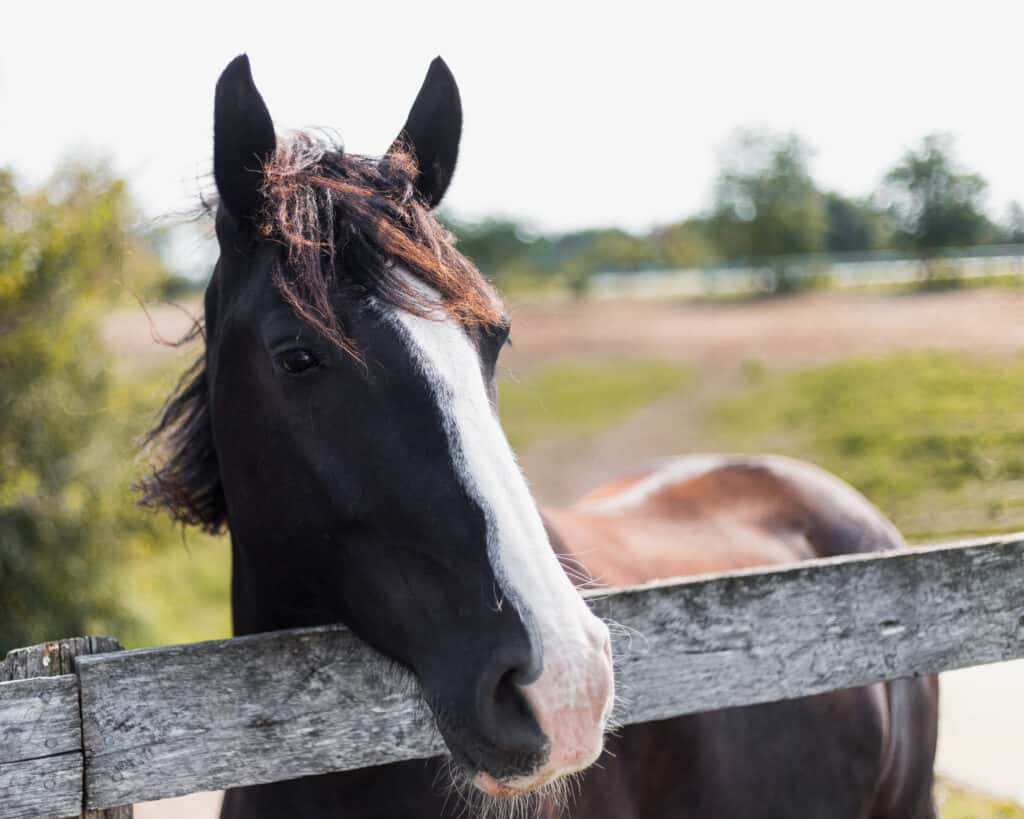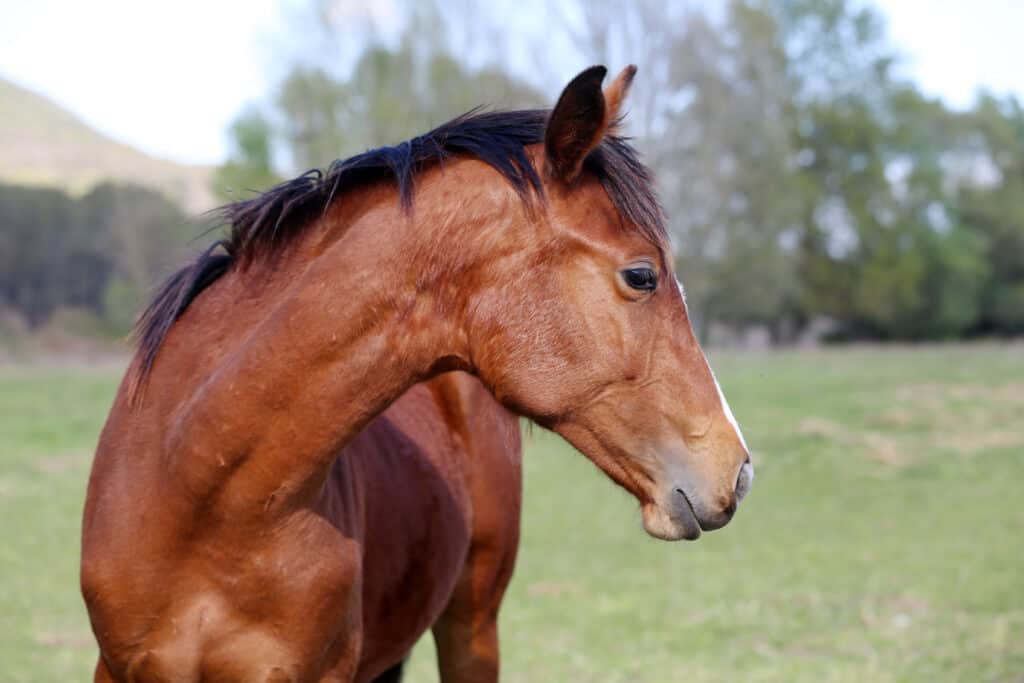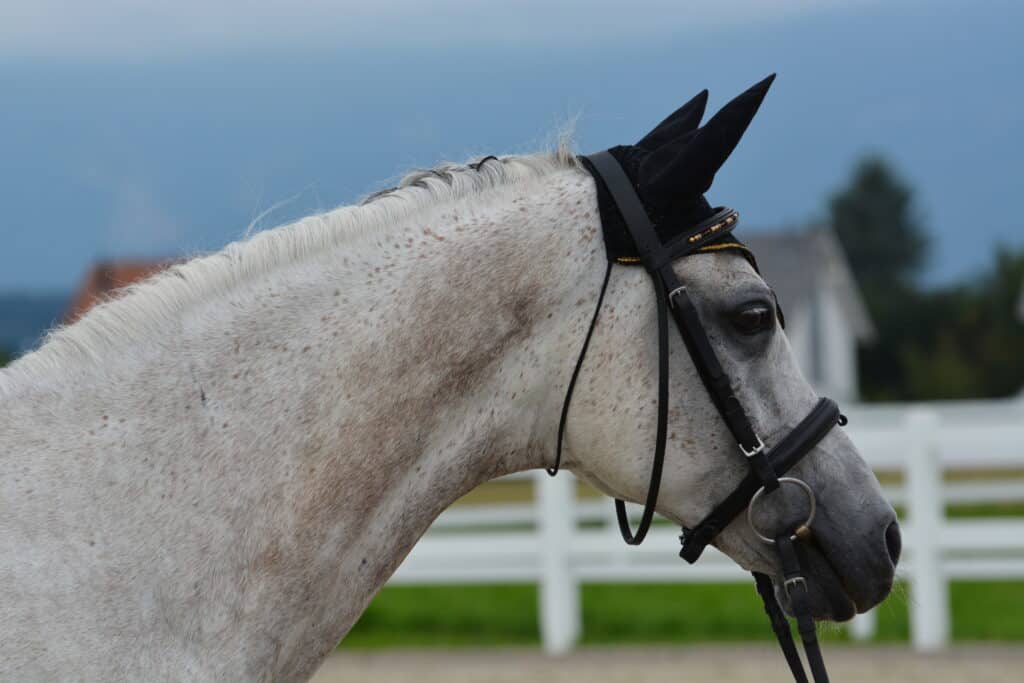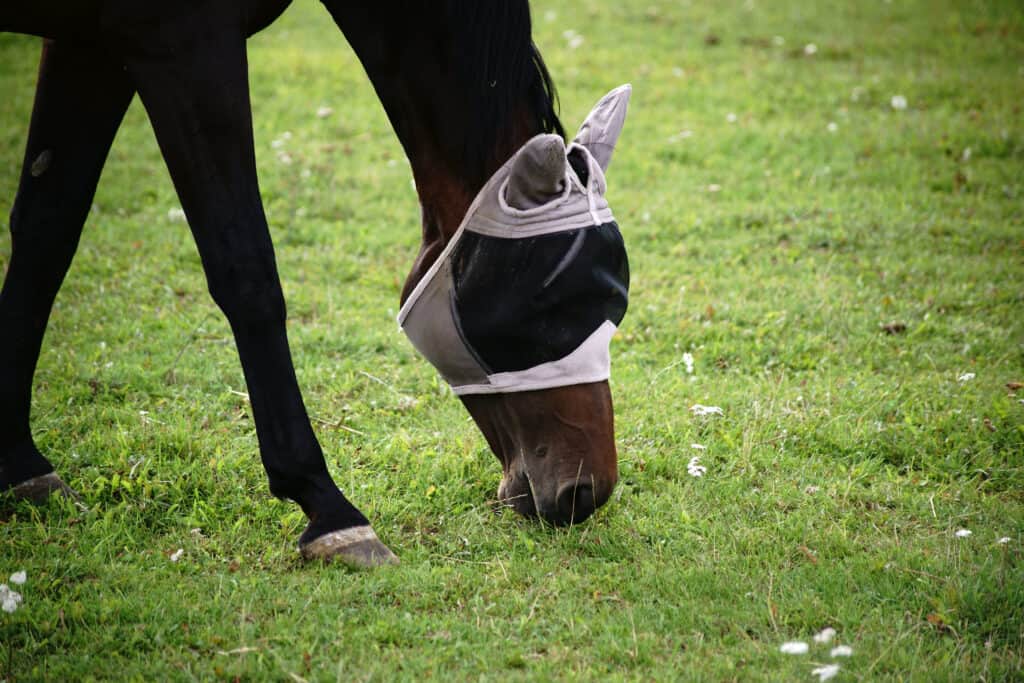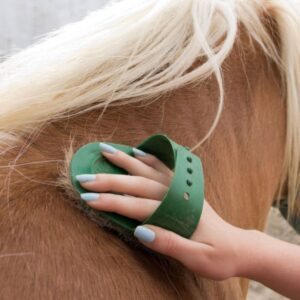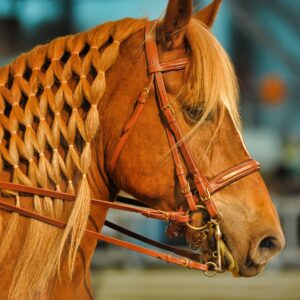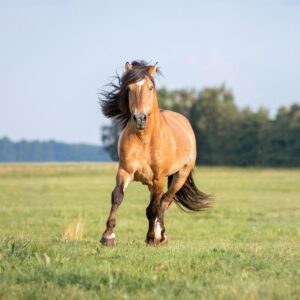When the weather changes from season to season, the question arises, should I cover my horse’s ears? Spring brings the bugs of summer, or fall leaves change into the winter snow. These changes have horse owners worldwide concerned with their equine partner’s ears. In this article, we will discuss the equine ear and how to take care of it.
Horse’s Ear Anatomy
Horses have better hearing than people. The ability to hear higher and lower frequencies has enabled horses to survive predators for thousands of years.
A horse’s ear has three parts: inner ear, middle ear, and the outer ear (called the pinna). The pinna is the part we can see. It is made of cartilage covered by skin and hair. The shape of the pinna allows sound to funnel thru the ear canal to the eardrum. Each ear can move independently from the other, allowing the horse to listen in different directions simultaneously. Here is an article on How to Read Your Horses Ears.
The middle ear has three bones called the hammer, the anvil, and the stirrup. The inner ear includes the organ for hearing (the cochlea) and the organ of balance (the vestibular system).
Skin Conditions That Affect the Outside of a Horse’s Ear
A condition rarely affects the outer ear alone. Most likely, there are tissue issues in other areas as well. A veterinarian will make a diagnosis based on a complete physical exam and diagnostic tests. Here is a list of possible disorders of the outer ear in horses.
- Insects and parasites
- Ticks on a Horse’s Ear
- Mites in a Horse’s Ear
- Fly Strike
- Aural Plaques
- Frostbite on a Horse’s Ear
- Immune-mediated Diseases
This Merck Manual Veterinary Manual website has excellent information on each of these conditions.
How to Take Care of a Horse’s Ears
Veterinarians recommend that horse’s ears should be clipped only when necessary. The hairs are nature’s way of protecting the ear against flies, parasites, and other types of infections. You will need to cover your horse’s ears with a fly mask with ear covering if you need to clip your horse’s ears.
If your horse shows signs of infection, you can clean the ear using a cloth dipped in warm soapy water. Do NOT let the water run down into the ear. Then apply an antibiotic cream. Be sure to consult your veterinarian for advice.
Clean your horse’s ears no more than once a week. Mother nature designed them to be self-cleaning. If you feel the need to wash out the ear, do not use alcohol because it can dry out the ear. Doctors tell us not to push anything into our ear canal. The same goes for horses. Avoid getting water or pushing the rag down into the horse’s ear canal.
How to Use a Fly Mask
Flies are the never-ending headache of every horse owner. Not only are they annoying, but they can also cause health problems for your horses. The best way to protect your horse from flies is to use a fly mask. Horses with clipped ears or infections will need a mask that covers the face and the ears. There is more to using a fly mask than putting it on and walking away. Here is a list of do’s and don’ts to remember when using a fly mask.
| Do’s | Don’ts |
| Take the fly mask off daily to check for rubbing, cleanliness, and wear. | Put the fly mask on and forget about it. Horses benefit from having the mask taken off periodically. |
| Clean the mask on a regular schedule. A dirty mask can cause skin infections. | Use a poor fitting mask. It can scratch the eye. The horse should be able to blink without touching the mask. |
| Make sure the ear coverings give the horse ample room to move their ears in all directions. | Use a mask that fits too loose or too tight. A mask that is too tight will cause skin irritation. A mask that is too loose can get caught on something when the horse rubs against it. |
| If the horse is going to wear the mask unattended, be sure the horse can pull the mask off if he gets caught on something. |
When it comes to ear bonnets, like the ones featured below, those are used as a means to muffle sounds to keep a horse calm while in competition/working environments.
Ear Covering for Winter Weather
Horses acclimated to a cold environment will naturally grow a winter coat that has added protection for the ears. Horses who are not adjusted to the cold or who have been clipped will benefit from using blankets and lined ear coverings. The ear coverings are lined and help to prevent frostbite. The same do’s and don’t for a fly mask also apply to the use of lined horse ear coverings.
Horse Courses by Elaine Heney
- Listening to the Horse - The Documentary by Elaine Heney & Grey Pony Films
- Shoulder In & Out Training for better balance, bend & topline development with your horse
- Over 110+ Polework Exercises & Challenges to Download
- Dancing at Liberty & Creating Connection with Your Horse (11 lessons) - Grey Pony Films
Final Thoughts
Horses rely on their ears for survival. Unfortunately, parasites and other bacteria can cause the ear to be infected and irritated. However, there are fly masks that cover not only the face but also the horse’s ears. During extreme cold, horses that do not have enough hair can benefit from the use of lined ear coverings.

